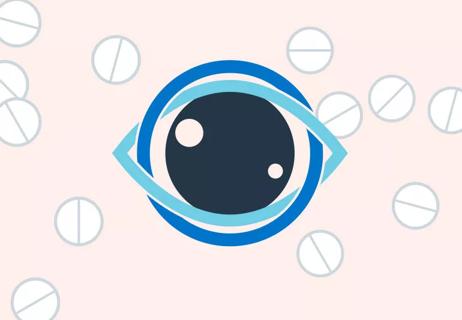A decrease in visual signals to your brain can lead to seeing things that aren’t really there

Macular degeneration is an age-related eye condition (also known as AMD) that changes the way you see things in your central vision. Your central vision, unlike your peripheral vision, is responsible for discerning the smallest details and focusing in on specific objects directly in front of you — like reading a book or watching the street lights change at an intersection while you’re driving.
Advertisement
Cleveland Clinic is a non-profit academic medical center. Advertising on our site helps support our mission. We do not endorse non-Cleveland Clinic products or services. Policy
This condition comes in two forms: wet AMD and dry AMD. If left untreated, or if it progresses enough, you can experience significant vision loss and visual hallucinations (Charles Bonnet syndrome).
Visual hallucinations can occur with either wet or dry AMD, but it’s more prominent with wet AMD simply because this eye condition progresses far quicker than the dry condition.
If you’ve been diagnosed with wet AMD, is it a guarantee that you’ll experience visual hallucinations? And what might that experience look like? Ophthalmologist Danny Mammo, MD, explains what you might expect from hallucinations and how to handle them when they occur.
The direct cause of hallucinations is unknown, but there are theories behind why they happen when you have low vision.
Your macula, the central part of your retina, is responsible for processing what you see, and it’s the part that’s most affected by wet AMD.
“What you see gets filtered through your eye and sent to your visual cortex, the part of your brain responsible for your vision,” explains Dr. Mammo. “When there’s end-stage vision loss from an eye condition like macular degeneration that’s damaging your retina, there is a decrease in input of visual signals to the brain.”
Advertisement
It’s believed that this decrease in input leads to a reflexive mechanism in your visual cortex that can make it more excitable and try to fill in the gaps of what it thinks should be there.
“You get these visual hallucinations as kind of an adaptive mechanism of losing an input,” explains Dr. Mammo.
More research is needed to determine the exact mechanism at play. But studies vary and suggest hallucinations can be a common symptom for anywhere between 10% and 40% of people with wet or dry AMD who have severe loss of vision.
Visual hallucinations are not real — they’re sensory experiences that happen when your eyes see something that isn’t really there. But the images can certainly feel real when they’re happening, especially if they’re happening to you for the first time.
Visual hallucinations look different for everyone, but they can appear like:
“They can be in color or black-and-white, and people really feel that they’re very real in the moment,” clarifies Dr. Mammo. “These hallucinations can be anywhere from just a few seconds up to a few hours, and they can happen at random. They can happen every day for some people, or they can happen a few times a year.”
Most often, these hallucinations will go away on their own.
“It helps to reassure someone that these hallucinations are not real,” states Dr. Mammo. “This is a normal physiological response to end-stage vision loss.”
Taking care of your personal health by lessening your stress and improving your sleep can help reduce the likelihood of these hallucinations, as well as help you manage them better in the moment.
If you have difficulty managing your hallucinations, try blinking, getting some sleep or making sure there’s adequate light in your environment — often, people with wet AMD have difficulty with contrast sensitivity.
“In rare cases, these hallucinations can be very distressing and can cause a lot of issues for someone if they’re not going away,” notes Dr. Mammo. “In those cases, a physician can prescribe psychiatric medications or anti-epilepsy medications to help reduce symptoms.”
If you start experiencing hallucinations with or without dry or wet AMD, you should speak to a healthcare provider who can determine their cause and help find a solution. And if you do have AMD and your hallucinations are proving distressful, it’s a good time to talk to someone about your experiences and determine what a provider can do to help manage their severity.
Advertisement
“If you don’t have end-stage vision loss and you start getting hallucinations, those could be early signs of a stroke. If that happens, it could be more urgent,” stresses Dr. Mammo. “But if you have severe vision loss and you start to get hallucinations, it’s usually not urgent unless they’re causing severe distress.”
Advertisement
Learn more about our editorial process.
Advertisement

Eating a balanced diet can help protect your eyes and may prevent AMD from progressing

They may help, but it depends on factors like the stage of your disease

A loss of central vision might complicate things behind the wheel

Tips for protecting and preserving your eyesight

Weighing benefits against age-related macular degeneration risk

Most recommended precautions center around minimizing bruising or swelling

Even one drink can have an impact on your cognitive function leading to slurred speech, blurred vision and impaired memory

Type 2 diabetes isn’t inevitable with these dietary changes

Applying a hot or cold compress can help with pain